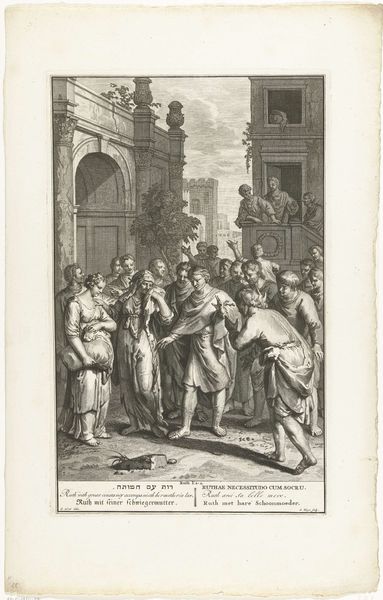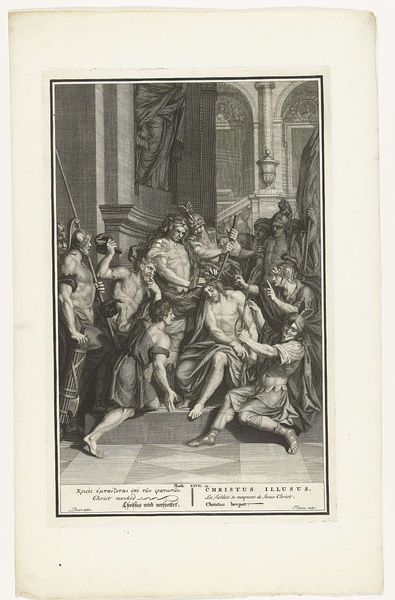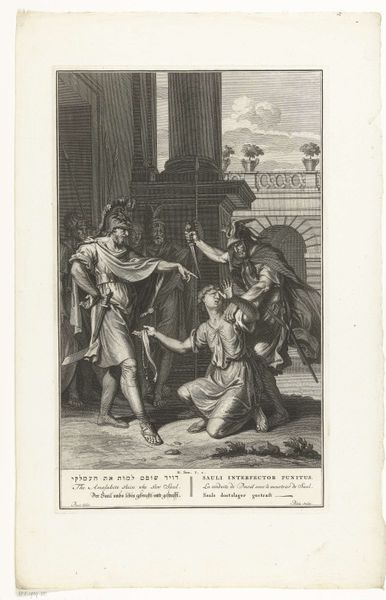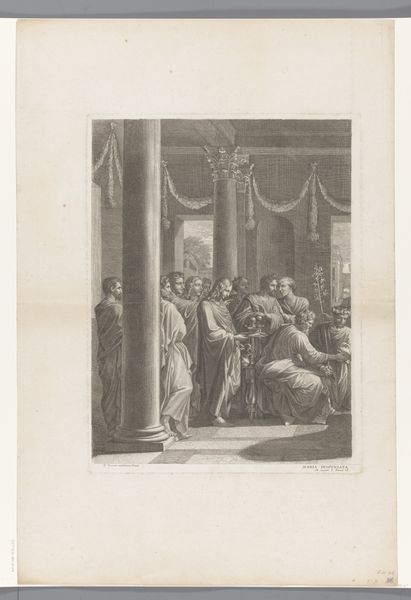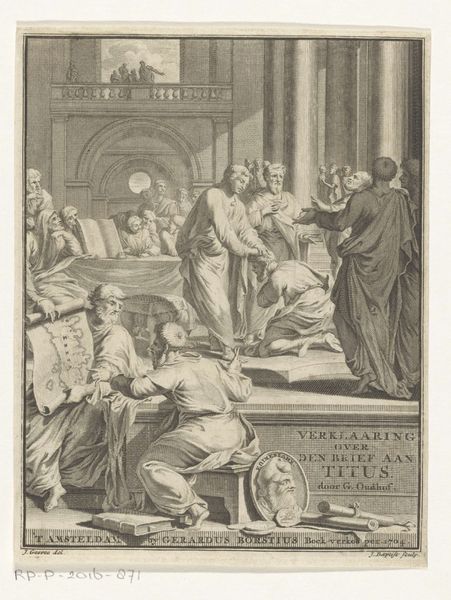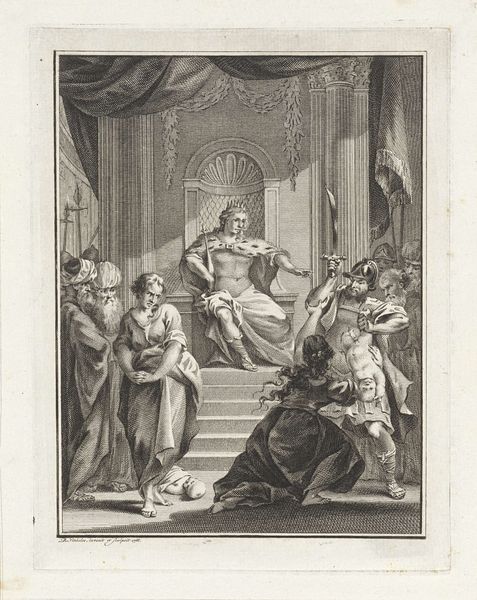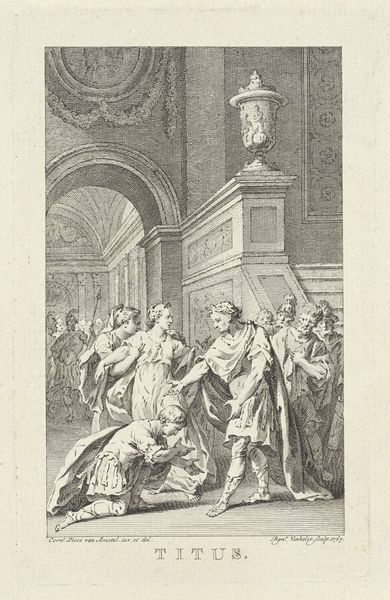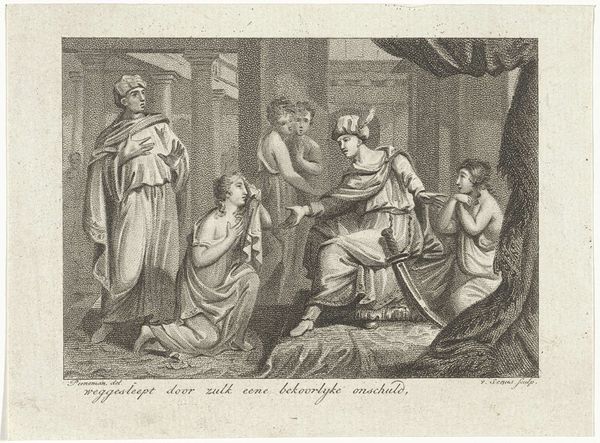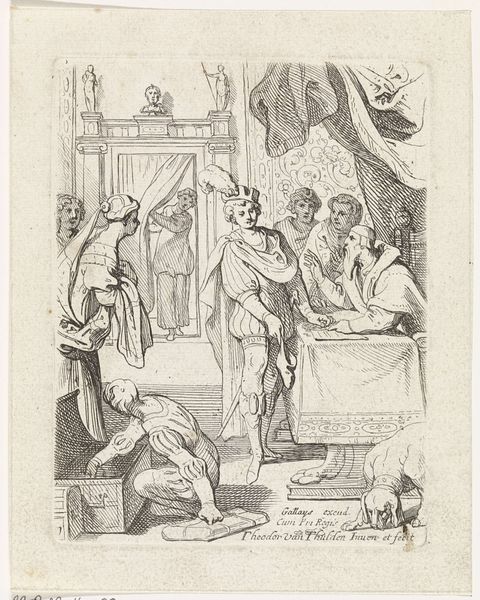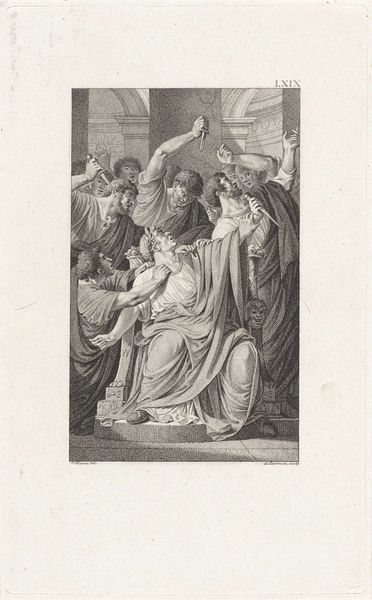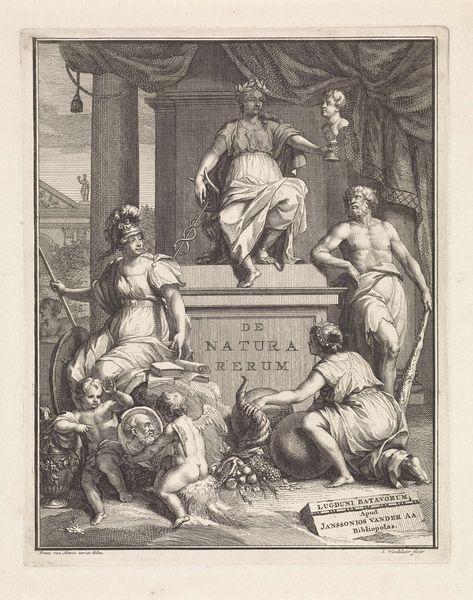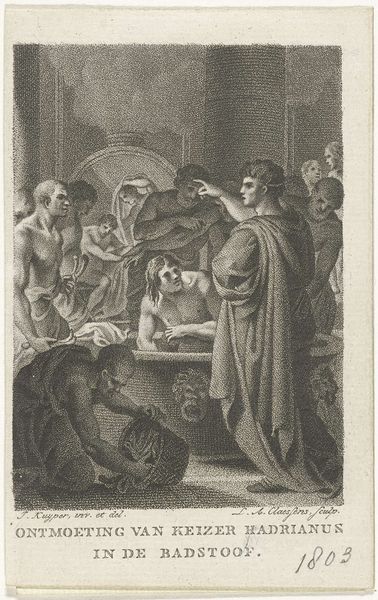
print, engraving
#
narrative-art
#
baroque
# print
#
figuration
#
history-painting
#
engraving
Dimensions: height 347 mm, width 218 mm
Copyright: Rijks Museum: Open Domain
Editor: This engraving, titled "Christus en de hoofdman (centurio) uit Kafarnaüm," was created by Abraham de Blois sometime between 1679 and 1728. The stark contrast and linear detail give it a powerful, almost theatrical feel. What strikes you most about this image? Curator: For me, it's how this Baroque piece invites a dialogue on power dynamics. We see Christ surrounded by figures of authority, while the centurion, typically a symbol of Roman power, is depicted kneeling, pleading. Consider the historical context: the print circulates an established biblical narrative, but also reinforces the Church’s authority amidst evolving social structures. What does the artist suggest about faith versus earthly power? Editor: I hadn't considered the power dynamic so directly. So the Centurion being presented as meek is perhaps unusual given what we know about centurions as authority figures? Curator: Precisely. And it’s vital to consider *who* is making these images, for *whom* and *why*. De Blois is crafting an image that reaffirms specific social roles and values, framing humility before Christ as a virtue, maybe as a counterpoint to social upheaval or reformation movements. This speaks volumes about the intersection of religious art and socio-political messaging. How does understanding that influence how you "read" the image? Editor: I see what you mean. It's not just a religious scene, but also a statement about societal order. So the seemingly simple depiction of faith has so much to do with context and who it’s supposed to persuade. Curator: Exactly. Considering this intersectional approach can lead us to ask whose stories are amplified and whose are marginalized by such visual representations. Editor: That gives me so much to think about in how to view art as connected to real-world concerns. Curator: Indeed. Approaching art with such historical consciousness opens us to a broader critical understanding of both its beauty and its impact.
Comments
No comments
Be the first to comment and join the conversation on the ultimate creative platform.
